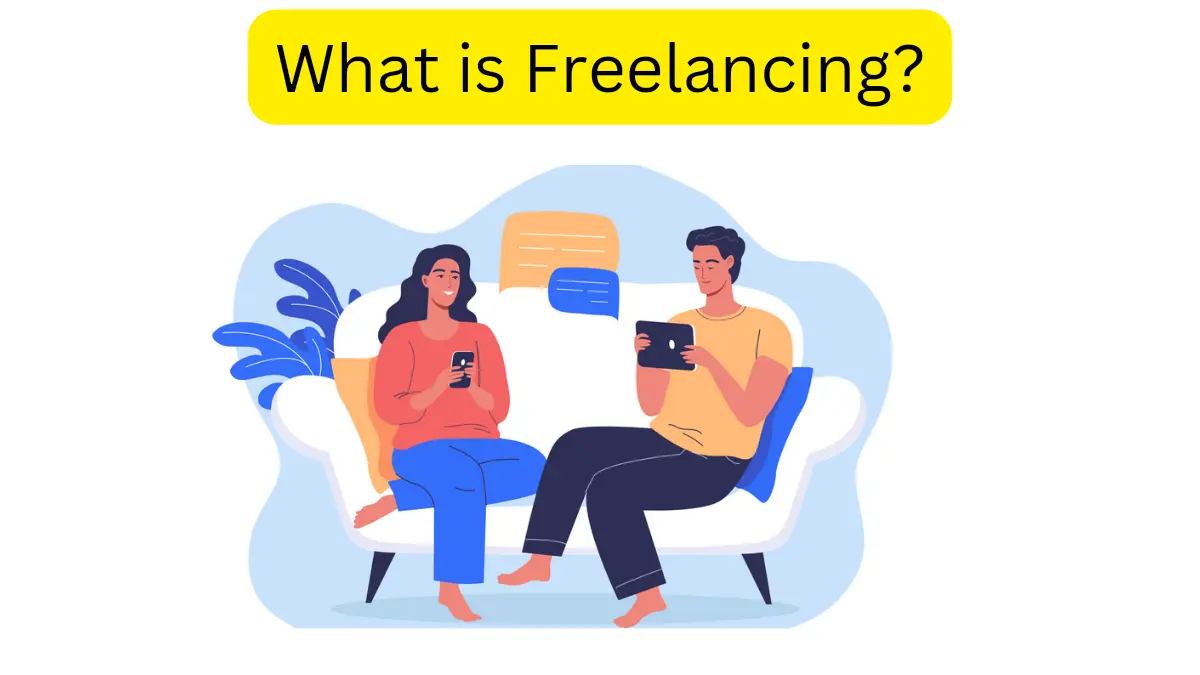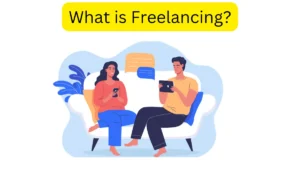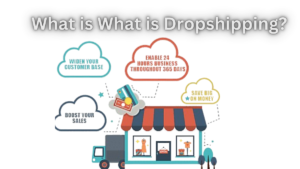Introduction
In today’s fast-paced digital world, What is Freelancing? freelancing has become a popular career choice for many. Whether you’re looking to escape the 9-to-5 grind, earn some extra income, or simply want more control over your work-life balance, freelancing offers a unique opportunity. But what exactly is freelancing, and how does it work? Let’s break it down in simple terms.
Table of Contents
What is Freelancing?
Freelancing is like being your own boss. Instead of working for one employer, you offer your skills and services to various clients, taking on different projects as you go. For example, you could be a writer, designer, web developer, or even a consultant, working on tasks for different clients at the same time. The beauty of freelancing is that you’re not tied to one company—you get to choose who you work with and what projects you take on.
How Does Freelancing Work?
Freelancers usually find work through online platforms like Upwork or Fiverr, or they might get clients through word of mouth or social media. Clients post jobs or reach out to freelancers for help with specific tasks, like writing blog posts, designing a logo, or building a website. As a freelancer, you’ll agree on a price and deadline, complete the work, and get paid. It’s as simple as that.
Why Freelancing Could Be the Right Fit for You
- Freedom to Choose: One of the biggest perks of freelancing is the freedom it offers. You can work when you want, where you want. Want to work from a café or your couch? Go for it. Need to take a day off in the middle of the week? No problem.
- Variety of Work: Freelancing allows you to work on a range of projects across different industries. This keeps things interesting and helps you build a diverse set of skills that can boost your career.
- Being Your Own Boss: As a freelancer, you’re in charge. You decide which projects to take on, how much to charge, and how to manage your time. This level of control can be incredibly empowering.
The Flip Side: Challenges of Freelancing
- Income Ups and Downs: Freelancing doesn’t come with a steady paycheck. Some months might be busy with lots of work, while others might be quieter. It’s important to plan ahead and budget for those slower times.
- Staying Focused: Without a boss looking over your shoulder, it’s up to you to stay on track. This means setting your own deadlines and sticking to them, even when distractions are all around.
- No Traditional Benefits: Freelancers miss out on things like health insurance, paid vacations, and retirement plans. You’ll need to handle these on your own, which is something to keep in mind when setting your rates.
Getting Started with Freelancing
If freelancing sounds appealing, here’s how to get started:
- Figure Out Your Skills: Think about what you’re good at. Are you a talented writer, a skilled designer, or maybe a tech whiz? Identify the services you can offer.
- Create a Portfolio: Show off your best work in a portfolio, either on a personal website or through platforms like LinkedIn. This helps potential clients see what you can do.
- Join Freelance Platforms: Sign up on sites like Upwork or Fiverr to find clients and start building your freelance career.
- Set Your Rates: Do some research to see what others in your field are charging. Set competitive rates that reflect your experience and the value you bring to the table.
The Best Freelancing Platforms to Get Started
When you’re ready to dive into freelancing, choosing the right platform can make all the difference. Here are some of the best freelancing platforms to help you get started:
- Upwork: One of the most popular freelancing platforms, Upwork offers opportunities in a wide range of fields, from writing and design to marketing and programming. It’s a great place to start, especially if you’re looking for long-term projects.
- Fiverr: Known for its “gig” model, Fiverr is perfect for freelancers offering specific services, like graphic design or video editing. It’s user-friendly and ideal for beginners looking to build a portfolio.
- Freelancer.com: Another well-known platform, Freelancer.com allows you to bid on projects across various industries. It’s competitive but offers a wide range of opportunities.
- Toptal: Toptal is more exclusive and focuses on high-quality freelancers in tech, design, and finance. If you have significant experience, this platform can connect you with top-tier clients.
- PeoplePerHour: This platform is particularly popular in Europe and the UK. It offers a mix of short-term tasks and long-term projects, making it versatile for freelancers of all levels.
- Guru: Guru is a platform that allows freelancers to showcase their past work and skills. It has a broad range of categories and is a good option for those looking for a stable, long-term client base.
Is Freelancing Right for You?
Freelancing can be a fantastic way to take control of your career, but it’s not for everyone. If you’re self-motivated, enjoy variety in your work, and don’t mind managing the business side of things, freelancing could be a great fit. However, if you prefer the stability of a regular paycheck and benefits, you might want to consider these factors before diving in.
freelancing releted most search FAQ
How can I start freelancing with no experience?
Starting freelancing without experience involves identifying or learning a skill, building a portfolio through volunteer work or personal projects, and joining freelancing platforms like Upwork or Fiverr to gain clients and credibility.
What are the top freelancing skills in demand?
High-demand freelancing skills include web development, content writing, graphic design, digital marketing, and video editing. As businesses increasingly rely on online platforms, these skills are essential for freelancers seeking work.
How much can I earn as a freelancer?
Freelancer earnings vary depending on skill level, experience, and demand. Beginners may earn $10-$25 per hour, while experienced freelancers can charge upwards of $50 per hour, with some earning six-figure incomes annually.
How do freelancers find clients?
Freelancers find clients through platforms like Upwork and Fiverr, networking on LinkedIn, social media promotion, referrals from previous clients, and personal websites showcasing their portfolios and services.
What are the challenges of freelancing?
Freelancers face challenges like inconsistent income, difficulty in finding clients, lack of employee benefits, and the need to manage taxes and business expenses independently, making financial management essential.
Do I need to pay taxes as a freelancer?
Yes, freelancers must report all their earnings and pay self-employment taxes. It’s important to keep track of income and business expenses to file taxes correctly and consult with a tax professional if needed.
How do I build a successful freelancing career?
To build a successful freelancing career, focus on developing marketable skills, maintain an updated portfolio, network actively, set clear income goals, and deliver quality work to build a solid reputation and client base.
Conclusion
Freelancing is more than just a way to make money—it’s a lifestyle that offers flexibility, independence, and the chance to grow your skills in exciting ways. Whether you’re just starting out or looking to switch up your career, freelancing can be a rewarding path. So, if you’re ready to take the plunge, start by identifying your skills, building a portfolio, and exploring freelance platforms. With the right mindset and a bit of hustle, freelancing could open up a whole new world of opportunities



